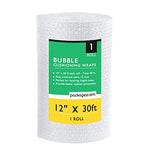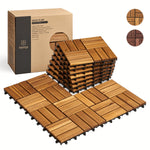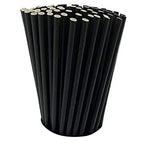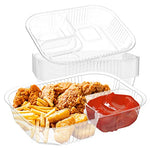You have no items in your shopping cart.
Styrofoam, also known as expanded polystyrene (EPS), is a common material used in packaging, disposable food containers, and insulation. However, its environmental impact has raised concerns regarding its disposal. Many people wonder, "Is Styrofoam recycle or garbage?" In this article, we will explore the recycling options for Styrofoam and shed light on the proper way to handle this material.
What is Styrofoam?
Styrofoam is a lightweight material made of polystyrene foam. It is known for its excellent insulation properties and durability. This versatile material is commonly used in the packaging industry to protect fragile items during transportation. Additionally, Styrofoam is widely used in the food industry for disposable cups, plates, and take-out containers due to its insulating ability.
The Environmental Impact of Styrofoam
Styrofoam has gained a notorious reputation for its negative impact on the environment. One of the main concerns is its long decomposition time. Styrofoam takes hundreds of years to break down naturally, which means it accumulates in landfills and contributes to the growing waste problem. Moreover, Styrofoam is not biodegradable and can release harmful chemicals when incinerated.
Is Styrofoam Recyclable?
Now, let's address the burning question: "Is Styrofoam recycle or garbage?" The answer is that Styrofoam can be recycled, but the process is not widely available in all areas. Recycling facilities equipped with specialized machinery can process Styrofoam and turn it into new products. However, due to its lightweight nature and bulkiness, Styrofoam takes up a significant amount of space, making transportation and storage challenging.
FAQs about Styrofoam Recycling
Here are some frequently asked questions about Styrofoam recycling:
1. Can I recycle Styrofoam at home?
Unfortunately, most curbside recycling programs do not accept Styrofoam. However, some local recycling centers or drop-off locations may collect it for recycling. It's best to check with your municipality or waste management facility for specific guidelines.
2. What types of Styrofoam can be recycled?
Clean and dry expanded polystyrene (EPS) foam, such as foam packaging material and food containers, can usually be recycled. However, other forms of Styrofoam, like foam insulation boards, may not be accepted due to their different composition.
3. How should I prepare Styrofoam for recycling?
Before recycling Styrofoam, remove any stickers, tape, or labels. Rinse off any food residue and allow it to dry. It's important to ensure the Styrofoam is clean and free from contaminants.
4. Can I recycle colored or printed Styrofoam?
In most cases, colored or printed Styrofoam can still be recycled. The recycling process typically involves melting down the foam and reforming it into new products, so the color or print does not pose a significant issue.
5. Are there any alternatives to Styrofoam?
Yes, there are environmentally friendly alternatives to Styrofoam. For packaging, materials such as molded pulp, corrugated cardboard, or biodegradable/compostable plastics can be used. When it comes to food containers, opting for reusable or biodegradable options like bamboo or sugarcane-based products can help reduce waste.
6. What should I do if Styrofoam recycling is not available in my area?
If Styrofoam recycling is not accessible in your area, the best option is to minimize its use and opt for alternatives whenever possible. Reusing Styrofoam for packaging or donating it to local businesses that may find it useful can also be a good way to reduce its environmental impact.
Conclusion
So, is Styrofoam recycle or garbage? While Styrofoam can be recycled, the availability of recycling facilities varies by location. It's essential to check with your local waste management authorities to determine the recycling options in your area. In the meantime, reducing the use of Styrofoam and exploring eco-friendly alternatives can help mitigate its environmental impact. Let's strive for a greener future by making conscious choices in our consumption habits.








